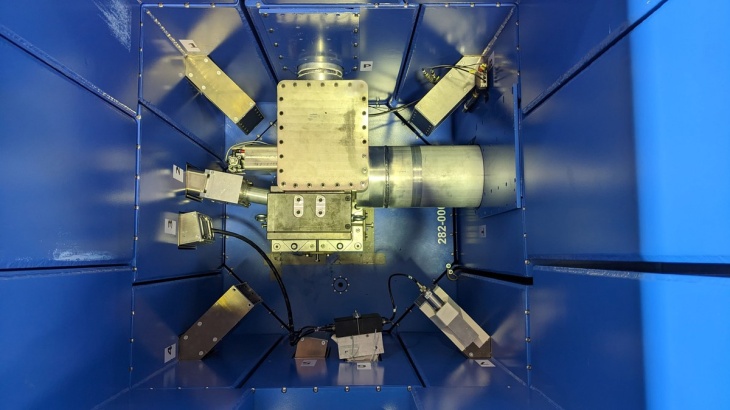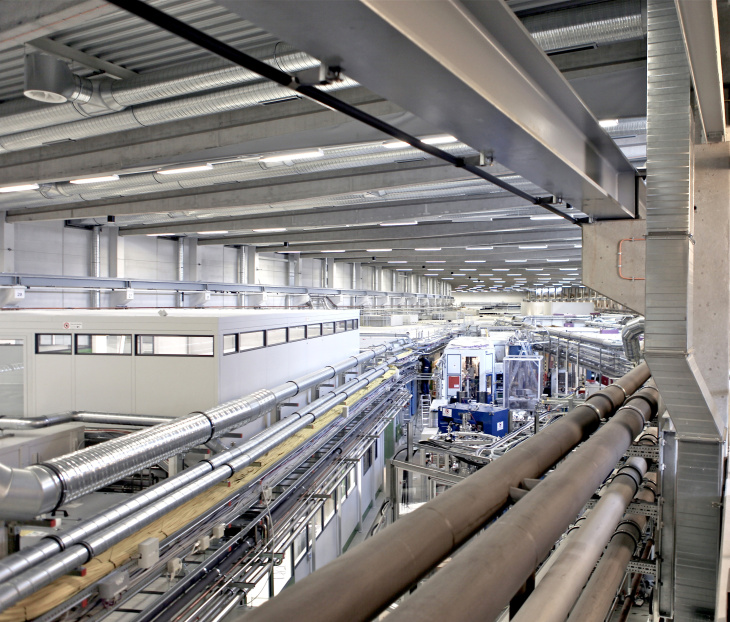Two projects in collaboration with Hereon on the BMFTR shortlist
The German Federal Research Minister Dorothee Bär, together with the Science Council and representatives of the evaluation committees, has presented a shortlist of the most promising projects in the field of large-scale research infrastructures. Nine projects were selected from 32 submissions in a science-led prioritisation process. The Helmholtz-Zentrum Hereon, together with Forschungszentrum Jülich and Deutsches Elektronen Synchrotron DESY, is involved in two of these nine projects: HBS-I High Brilliance Neutron Source Phase I and PETRA IV.
The BMFTR shortlist is the result of the national prioritisation process for large-scale research infrastructures. The aim of the process was to select the research infrastructures that are a priority for expanding and maintaining Germany's leading position in research and innovation in international competition, while at the same time ensuring that the plans and, in particular, the cost estimates submitted are reliable. The submitted projects were reviewed by a complex evaluation process involving more than 100 renowned international experts. Inclusion on the shortlist does not explicitly imply a commitment to funding, but it is an important signal for the priority pursuit of the projects from a research policy perspective and their potentially significant contribution to the performance of the German science system.
HBS-I: New neutron source in Jülich

View inside a target station for generating neutrons. Photo: Forschungszentrum Jülich
At Forschungszentrum Jülich, the new neutron source, HBS-I, will be built. Based around a powerful proton accelerator, HBS-I generates highly brilliant neutron beams that can be used for a wide range of applications, from materials development to energy research. With its flexible target stations, HBS-I complements major international facilities such as the European Spallation Neutron Source (ESS) and makes Germany a hub for innovation in neutron technology. Hereon is a co-applicant with Forschungszentrum Jülich and would participate in the construction of materials science instruments at HBS-I.
PETRA IV replaces PETRA III at DESY

The Petra III particle accelerator ring at DESY. Photo: Hereon/Torben Fischer
With PETRA IV, DESY will build the most powerful X-ray microscope of its kind. PETRA IV opens up new possibilities for analysing structures and processes – down to the atomic level and under real conditions. For the first time, researchers will be able to illuminate individual objects in the nanometre range and record the structure, energetics and function of molecular units in materials and cells under realistic conditions. PETRA IV can thus contribute to the development of materials and technologies of the future. This promises new perspectives for basic research and high technology. The facility is being developed as a further development of PETRA III and uses synchrotron radiation with extremely low emittance. It will make processes measurable in four dimensions – structure, time, energy and space – and thus accelerate the design of new medicines or materials, for example.
Hereon operates several materials science beamlines at PETRA III as part of the German Engineering Materials Science Center (GEMS) and has already developed the technical design for their successors at PETRA IV. PETRA IV and HBS-I would be key elements for the long-term complementary use of synchrotron radiation and neutrons (here, GEMS operates instruments at the Heinz Maier-Leibnitz Zentrum MLZ) within the framework of GEMS.
Four Helmholtz projects on the shortlist
In addition to HBS-I and PETRA IV, the Federal Ministry of Education and Research has selected two further projects from the Helmholtz Association for its shortlist: DALI Dresden Advanced Light Infrastructure from the Helmholtz-Zentrum Dresden-Rossendorf (HZDR) and IceCube-Gen 2 from DESY and the Karlsruher Institute of Technology (KIT).
Cutting-edge research for a changing world
Helmholtz-Zentrum Hereon`s scientific research aims at preserving a world worth living in. To this end, around 1000 employees generate knowledge and research new technologies for greater resilience and sustainability - for the benefit of the climate, the coast and people. The path from idea to innovation leads through a continuous interplay between experimental studies, modeling and AI to digital twins that map the diverse parameters of climate and coast or human biology in the computer. This is an interdisciplinary approach that spans from the fundamental scientific understanding of complex systems to scenarios and practical applications. As an active member of national and international research networks and the Helmholtz Association, Hereon supports politics, business and society in shaping a sustainable future by transferring the expertise it has gained.
